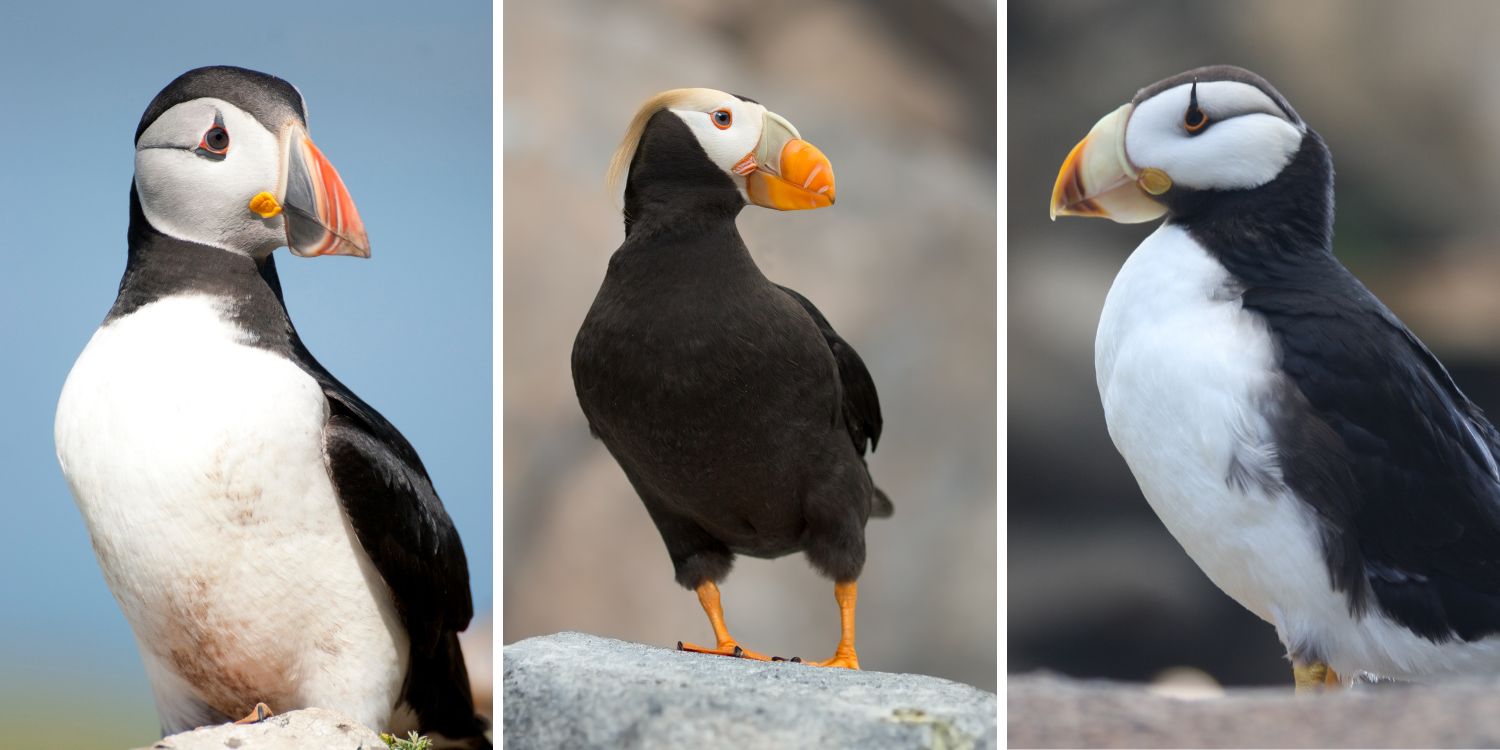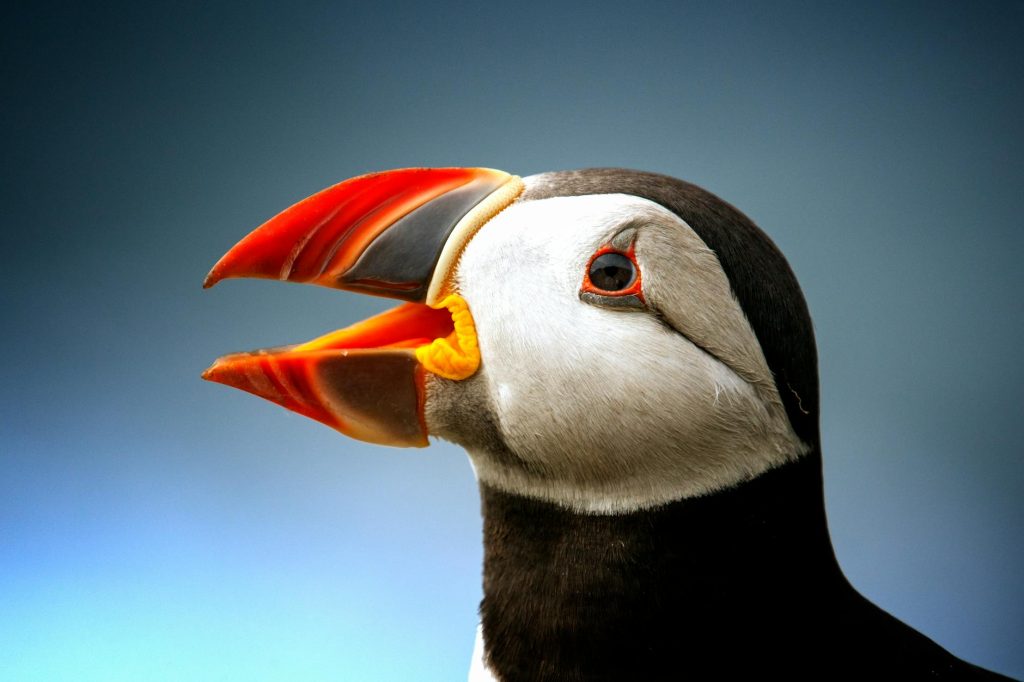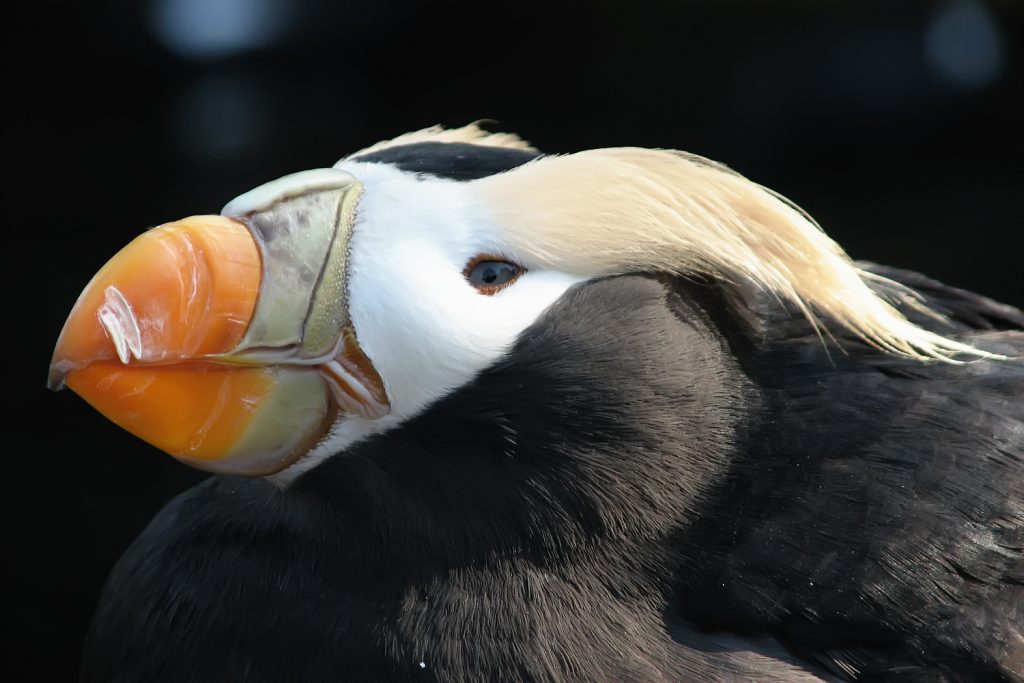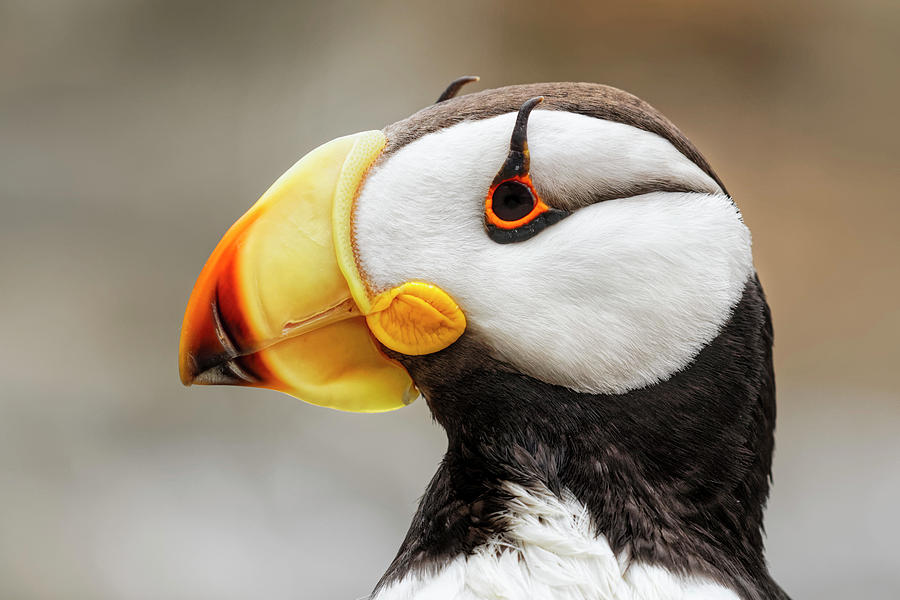
Puffins are some of the most beloved and instantly recognizable seabirds in the world. With their colorful beaks, waddling walks, and comical charm, these birds often steal the spotlight in coastal ecosystems. But did you know there isn’t just one type of puffin? There are three distinct species, each with its own unique traits and natural habitat.
In this blog post, we’ll introduce you to the three types of puffins: the Atlantic Puffin, the Tufted Puffin, and the Horned Puffin.

1. Atlantic Puffin (Fratercula arctica)
Nickname: The Clown of the Sea
Location: North Atlantic – coasts of eastern Canada, Iceland, Greenland, Norway, and parts of the UK.
Key Features:
- Iconic colorful beak with a mix of red, yellow, and blue (especially during breeding season).
- Bright orange feet.
- White face with a black cap that gives it a “helmeted” look.
- The only puffin found in the Atlantic Ocean.
Fun Fact: Iceland is home to the world’s largest population of Atlantic Puffins—millions nest there every summer!

2. Tufted Puffin (Fratercula cirrhata)
Nickname: The Surfer Puffin
Location: North Pacific – from California to Alaska, across to Russia and Japan.
Key Features:
- Large yellow tufts (feather plumes) that stick out from the sides of the head.
- All-black body with a stark white face.
- Thick orange bill.
- Prefers cliffs and offshore islands for nesting.
Fun Fact: Despite looking slightly grumpier than its Atlantic cousin, the Tufted Puffin is an excellent diver and can go over 100 feet deep in search of fish.

3. Horned Puffin (Fratercula corniculata)
Nickname: The Punk Rock Puffin
Location: North Pacific – especially around Alaska and the Bering Sea.
Key Features:
- Small fleshy “horns” (black, horn-like extensions above each eye).
- Bright white face with a black back and cap.
- Similar in color to the Atlantic Puffin, but with a distinctive beak shape and the unique horns.
- Nests in rocky crevices rather than grassy burrows.
Fun Fact: Horned Puffins can sometimes be seen floating far out at sea, even in rough ocean waters—they’re truly built for the marine life!
Puffin Conservation and Climate Challenges
All three puffin species are seabirds that spend much of their life at sea, only returning to land to breed. Their populations are facing pressures due to climate change, overfishing, and habitat disruption. Warming oceans affect the availability of the small fish they depend on, and human activity can disturb sensitive nesting areas.
Conservation groups around the world are working to monitor populations, restore habitats, and protect nesting sites. Even small actions—like reducing plastic waste or supporting marine conservation—can help puffins and other seabirds thrive.
Puffin Recap
| Puffin | Range | Key Features | Nickname |
|---|---|---|---|
| Atlantic Puffin | North Atlantic | Colorful beak, orange feet, white face | Clown of the Sea |
| Tufted Puffin | North Pacific | Yellow head tufts, black body | Surfer Puffin |
| Horned Puffin | North Pacific | Black horns above eyes, white face | Punk Rock Puffin |
Whether you spot one nesting on a cliffside or diving into the sea for fish, puffins are always a delight to see. Now that you know the differences between the three puffin species, you’ll be able to appreciate each one’s special charm.
Sources:
[3]: National Geographic – Puffin Facts
[2]: Seabird Institute: Project Puffin
Disclaimer: This blog post is for edutainment purposes only and may not be entirely accurate.






